

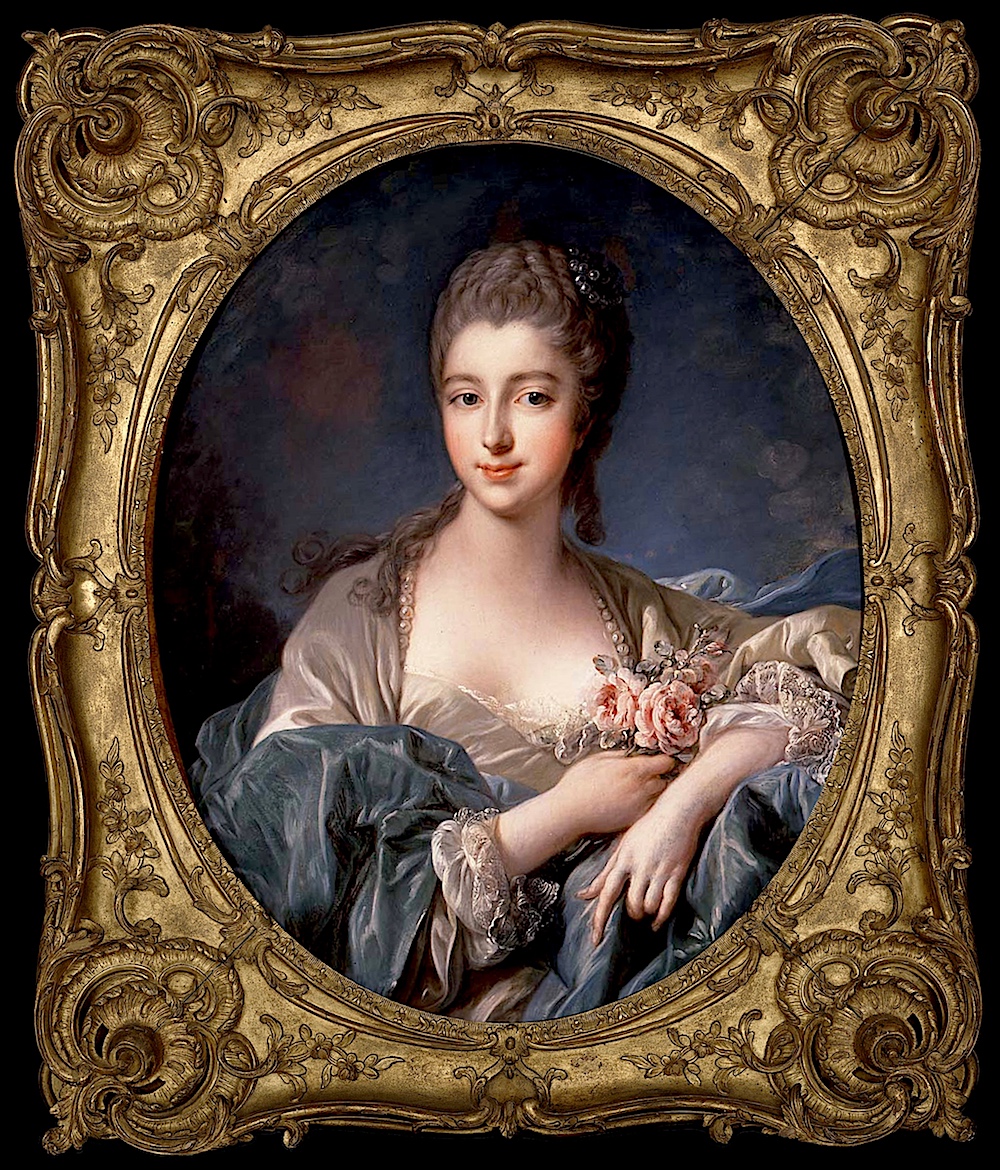
| The good news is that I discovered after searching every possible lead in connection with Suite d'estampes gravees par Madame la marquise de Pompadour d'apres les pierres gravees de Guay, graveur du roy. a digitalized copy of the 1782 edition. This is Madame de Pomadour's completed work and I am going to show here the additional engravings that are in this set as well as some of the text to give a sample of the notes for each engraving. First of all however I want to thank the Herzogin Anna Amalia Bibliothek for making this publication available to the world. |
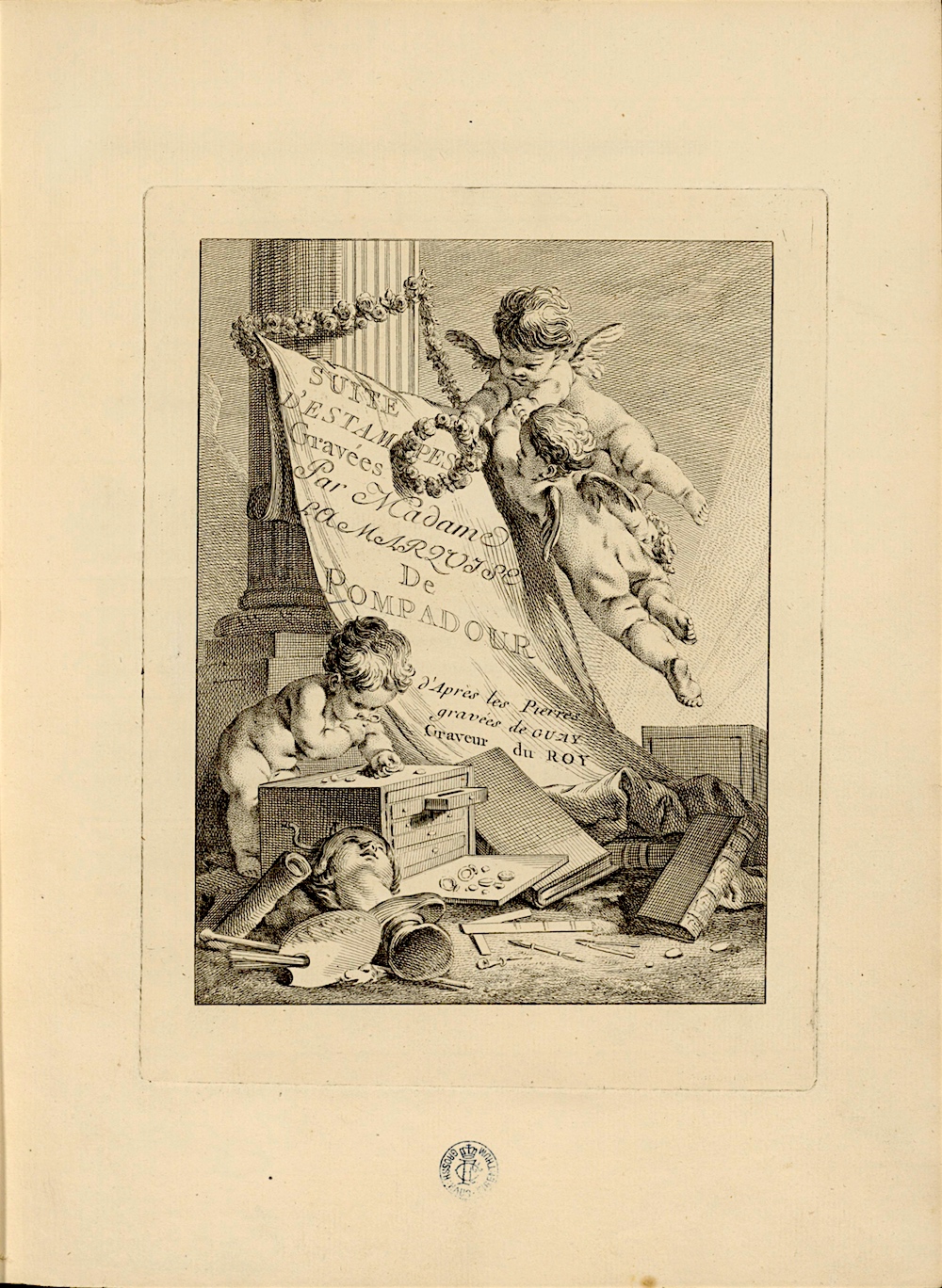
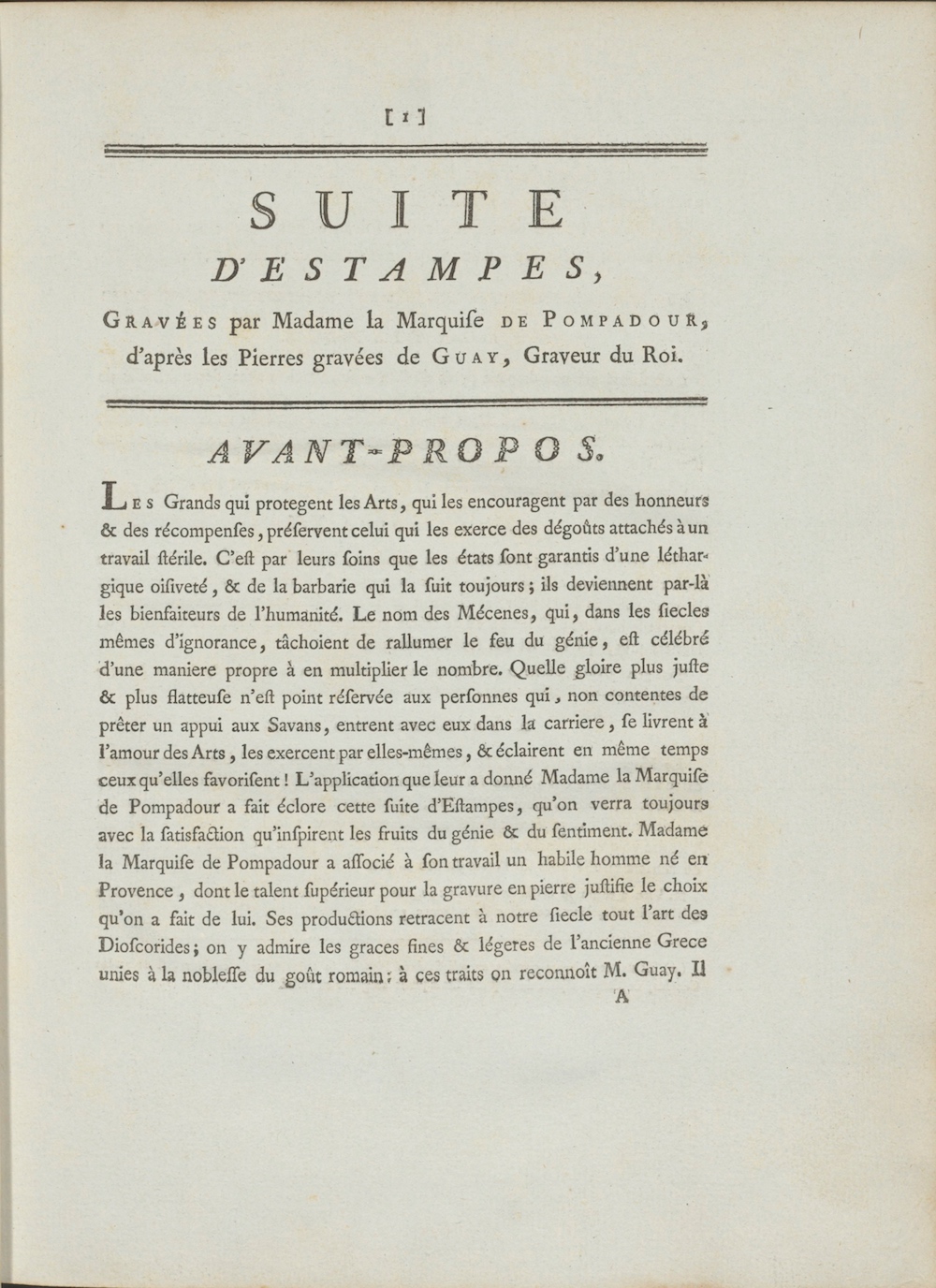
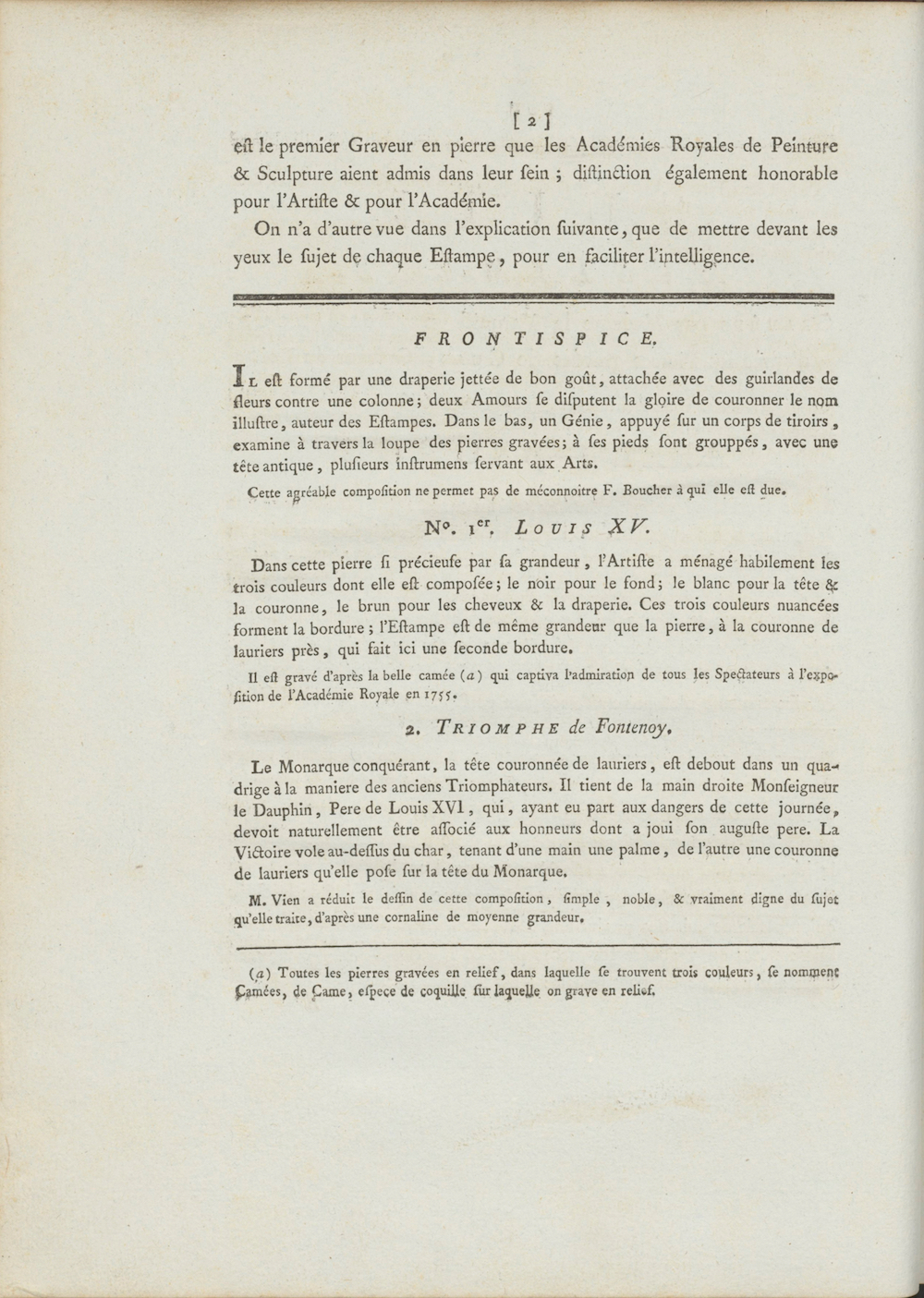
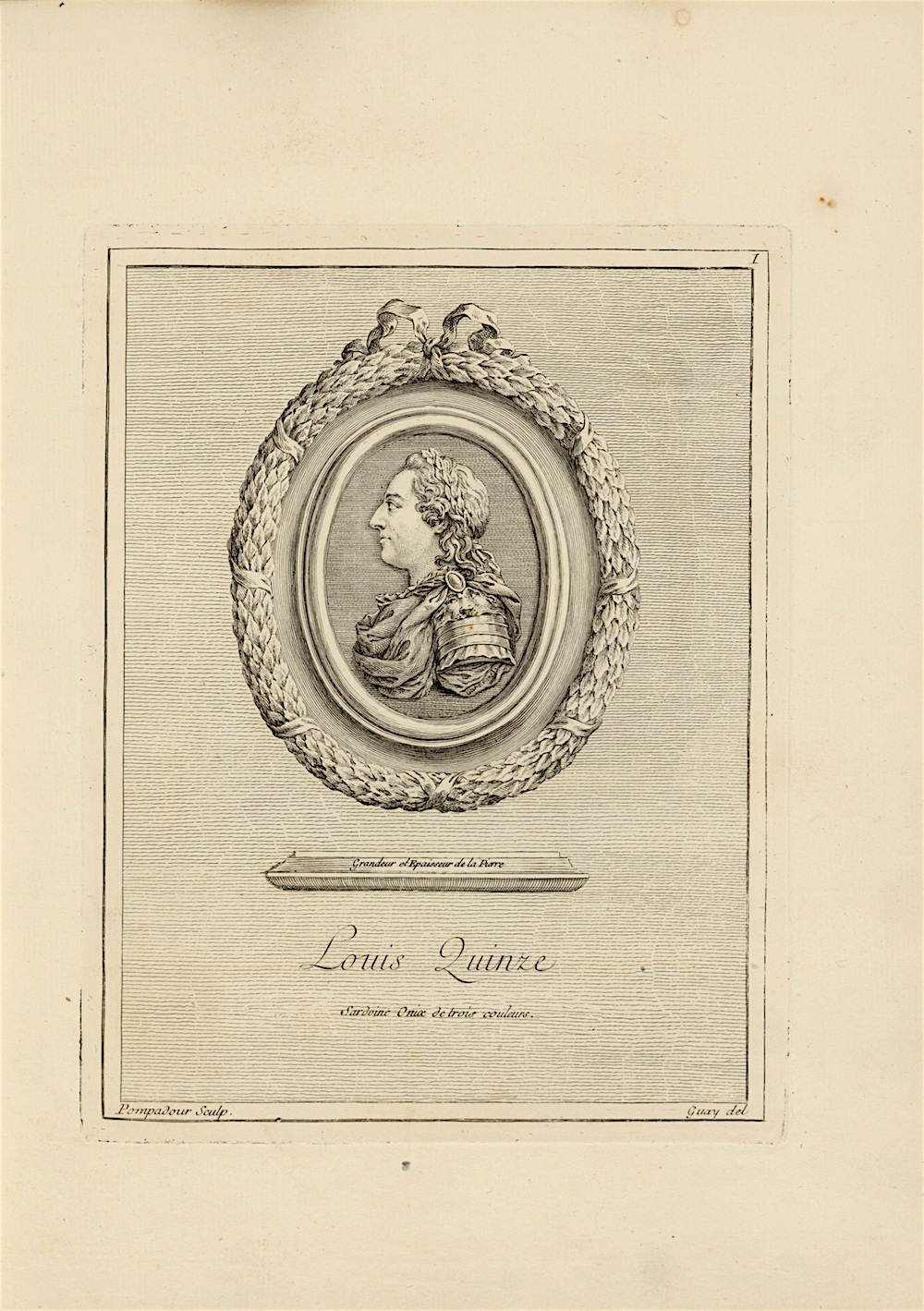
| Here is plate No. 1 and wondered if I could still find this bit of jewelry somewhere on the internet, sure enough there was something similar on Gallica. (click here to see it.) However the image was reversed, I wondered if maybe thats something to do with the way Mademe Pompadour made these engravings. In the catalogue data you find no mention of this being anything to do with the Pomadour plates. They give the measurements of it as being 96 x 82 mm. really not small. Then I had the brainwave to check the hand written Table of Contents from found in the Walters copy. |
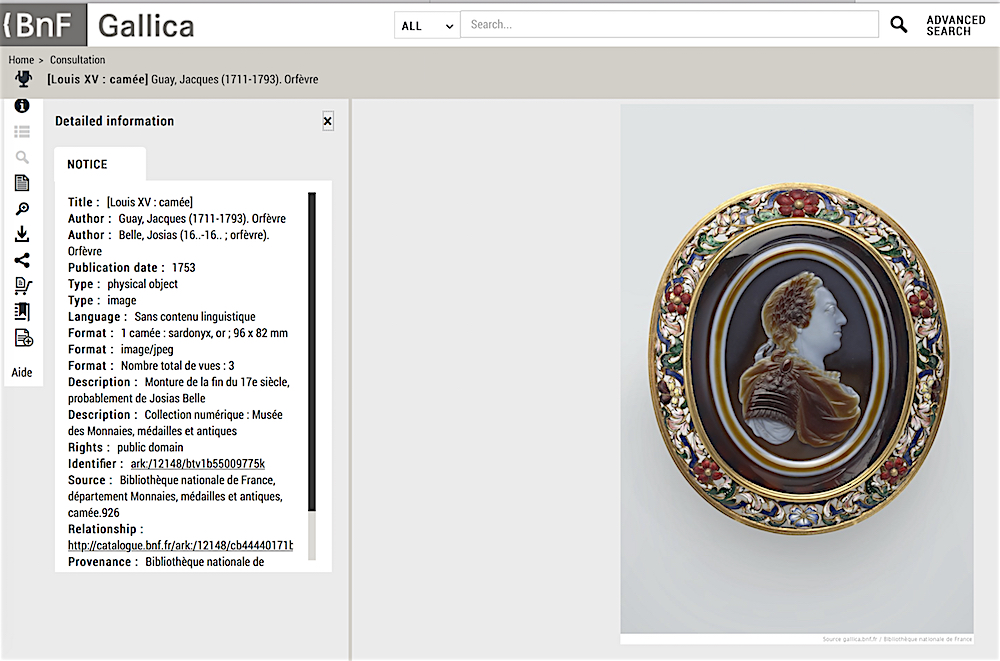
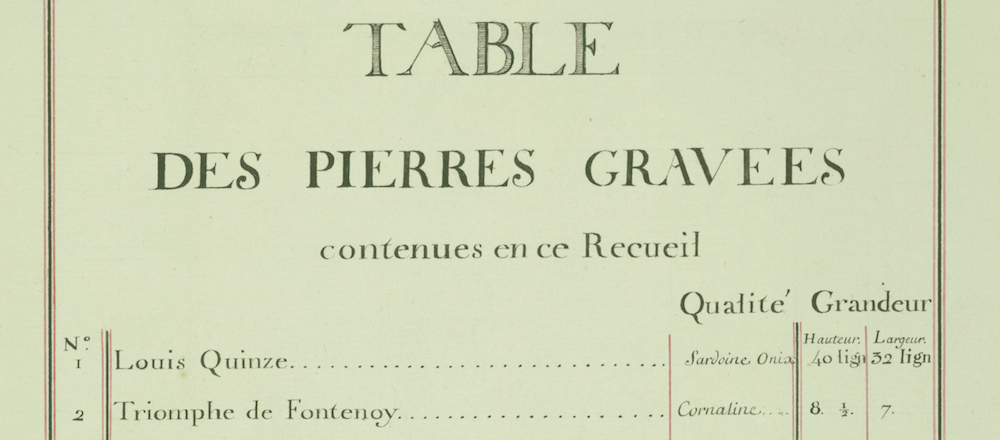
| When I found it, I discovered that the units of measure that they were using in the pre revolution mid-eighteenth century was not millimetres, so then you scurry about to find out what they were, and it turns out that the measurements given in the Table were units of ligne 40 high and 32 wide, in the tables below we see that we have to multiply these figures by 2.256 to get millimetres 90.24 x 72.19. So these measures do not match up, even if you imagine that Pompadour was just measuring the stone and the Gallica measurements are for the whole object. Searching further I found another reference in the BnF catalogues, Format: sardonyx a trois couches ; 97 x 82 mm, monture comprise. |
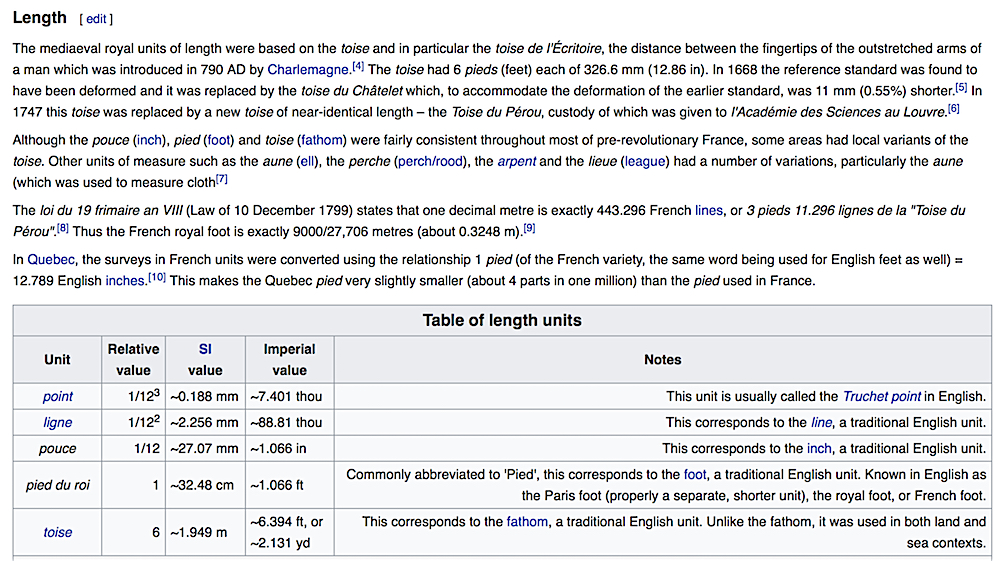
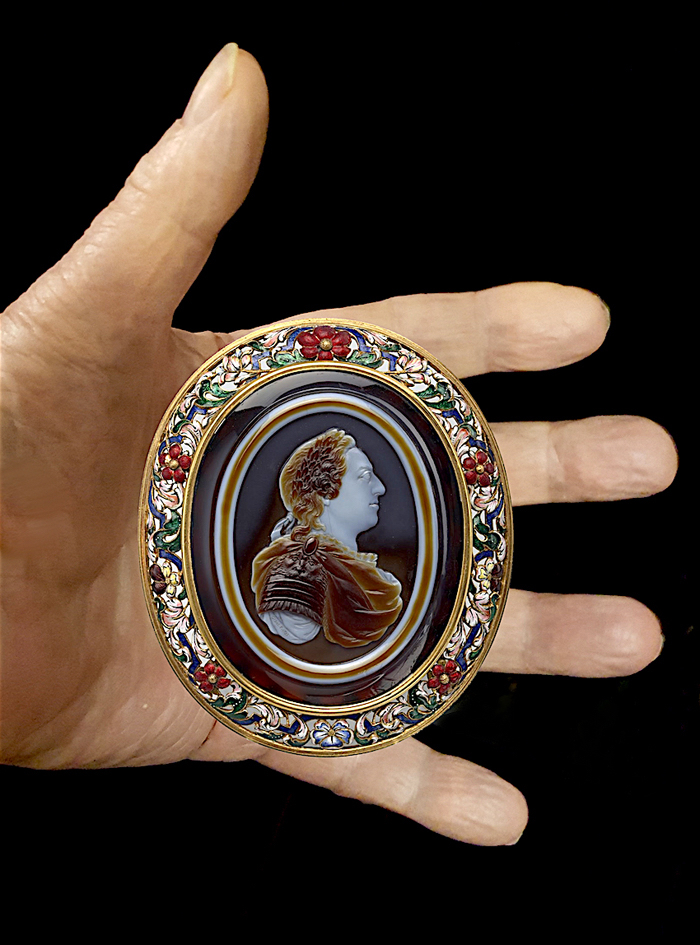
| Science would not exist without measurement. In the diagrams below I show that the actual stone, a three layered sardonyx is only about 75 x 60 mm. Someone is bound to ask if there isn't a chance that there are two of these finely carved items. I suspect that if there was, we would know, they would be in evidence, and if you search you do not find another identical twin, not even close, my guess is that the Plate 1 example is in fact the same engraved and signed example that we see in the BnF Gallica photos that I show here. Madame Pompadour must have measured the mounting as well. Below I show just how similar the engraving and the real thing are. *note that I have reversed the Plate 1 engraving in some of these diagrams. |
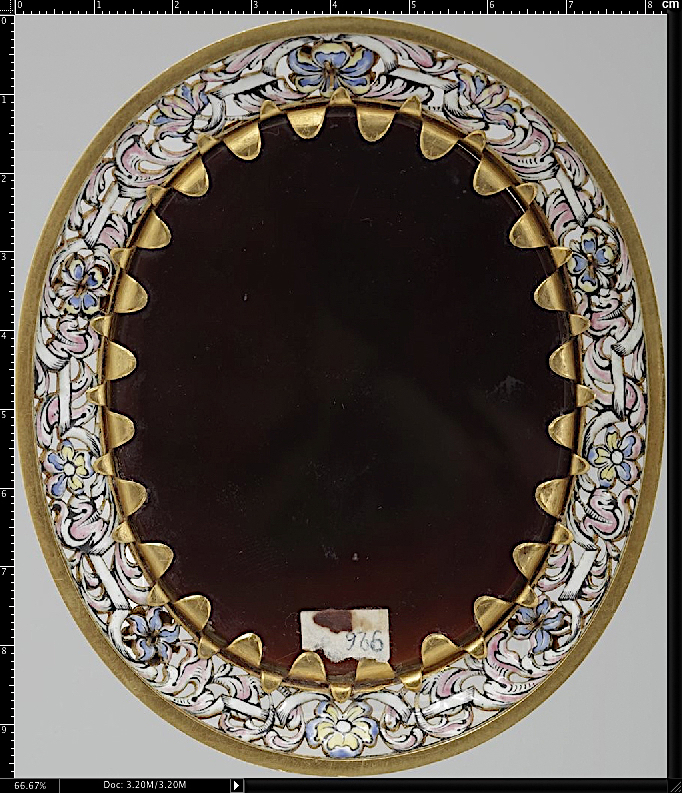
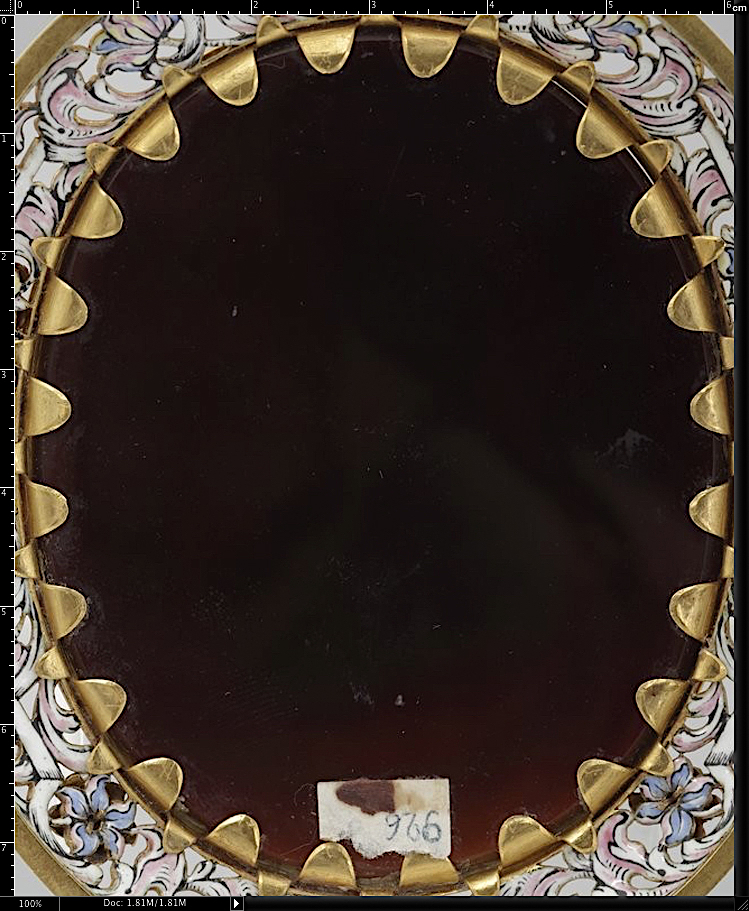
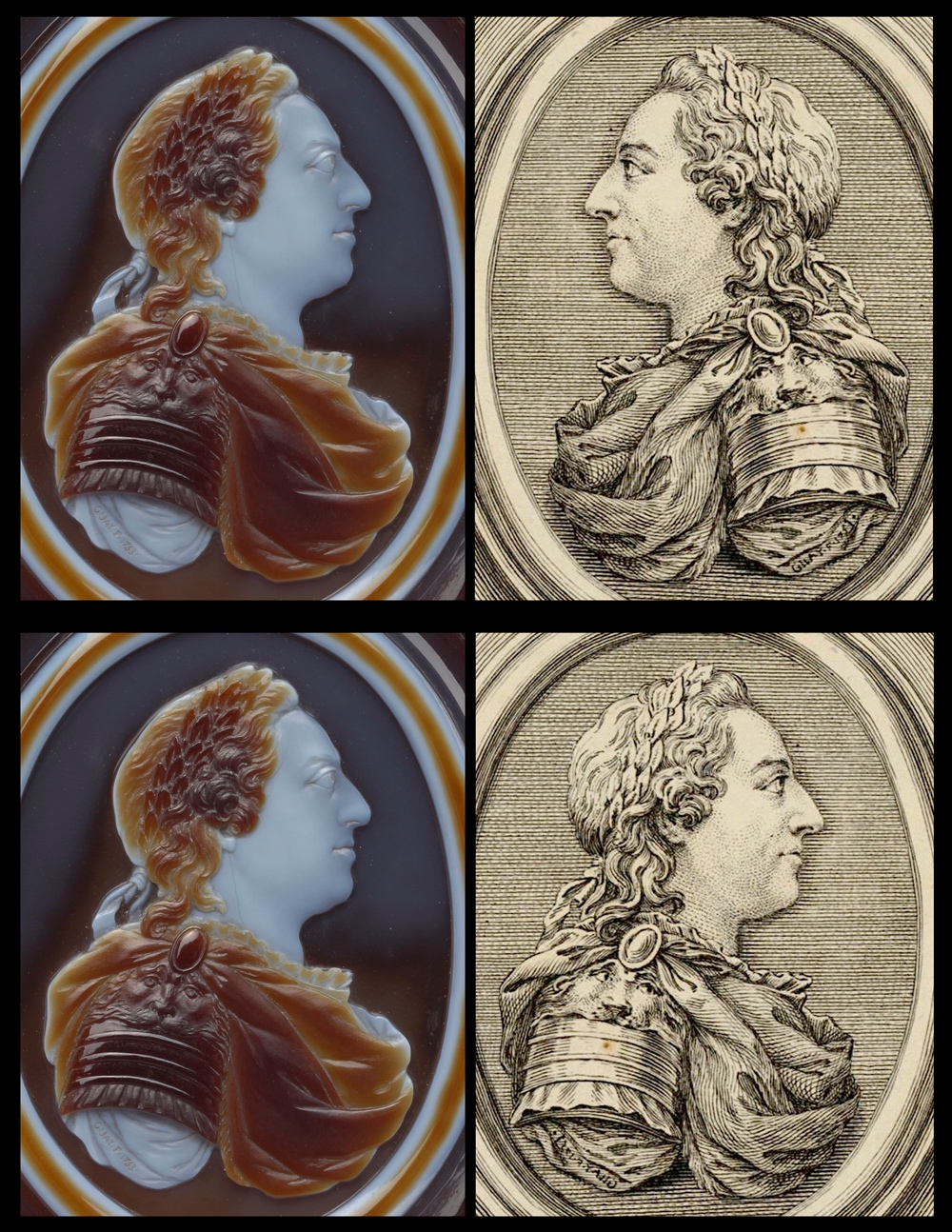
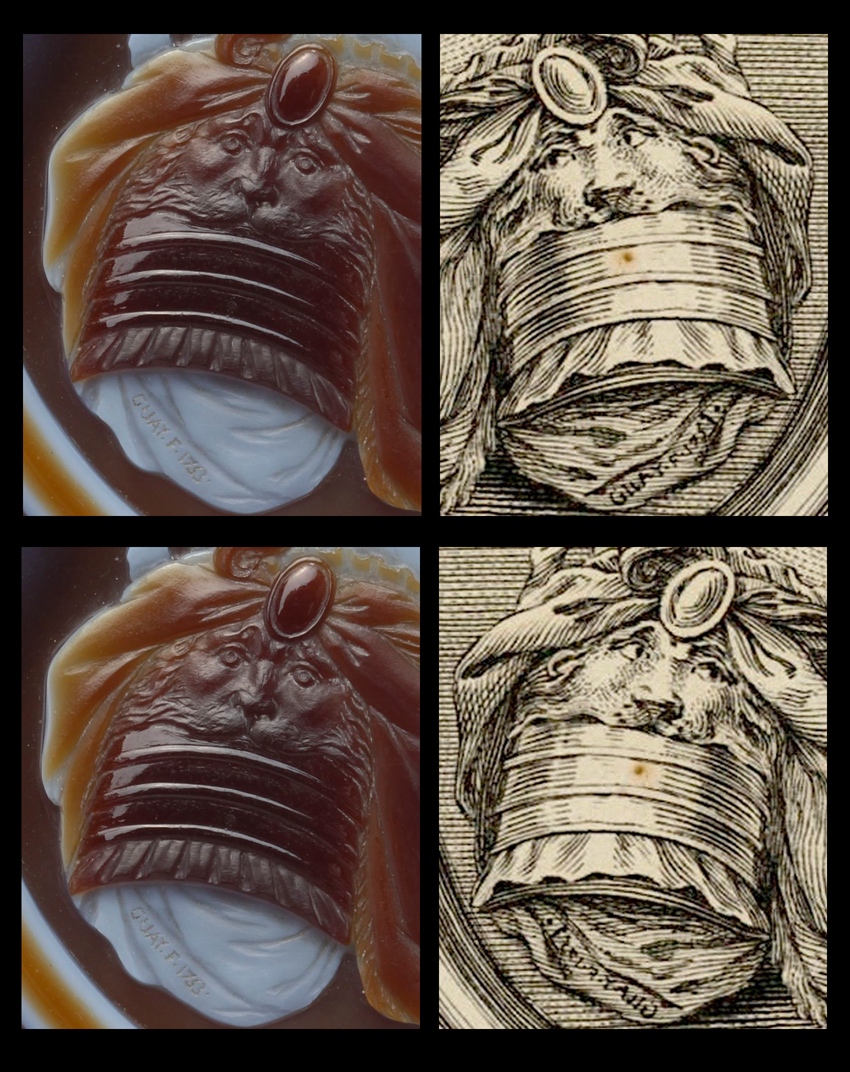
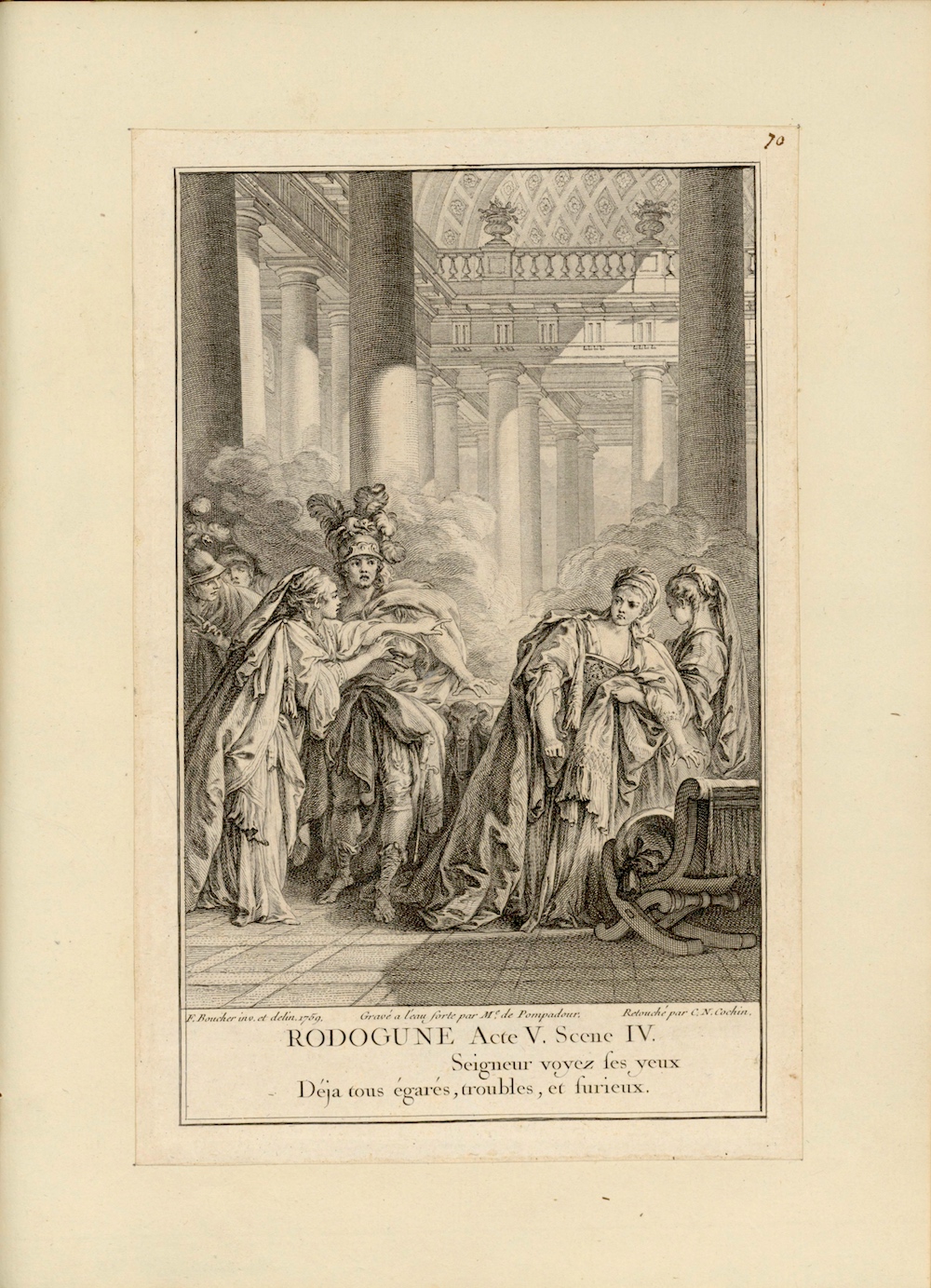
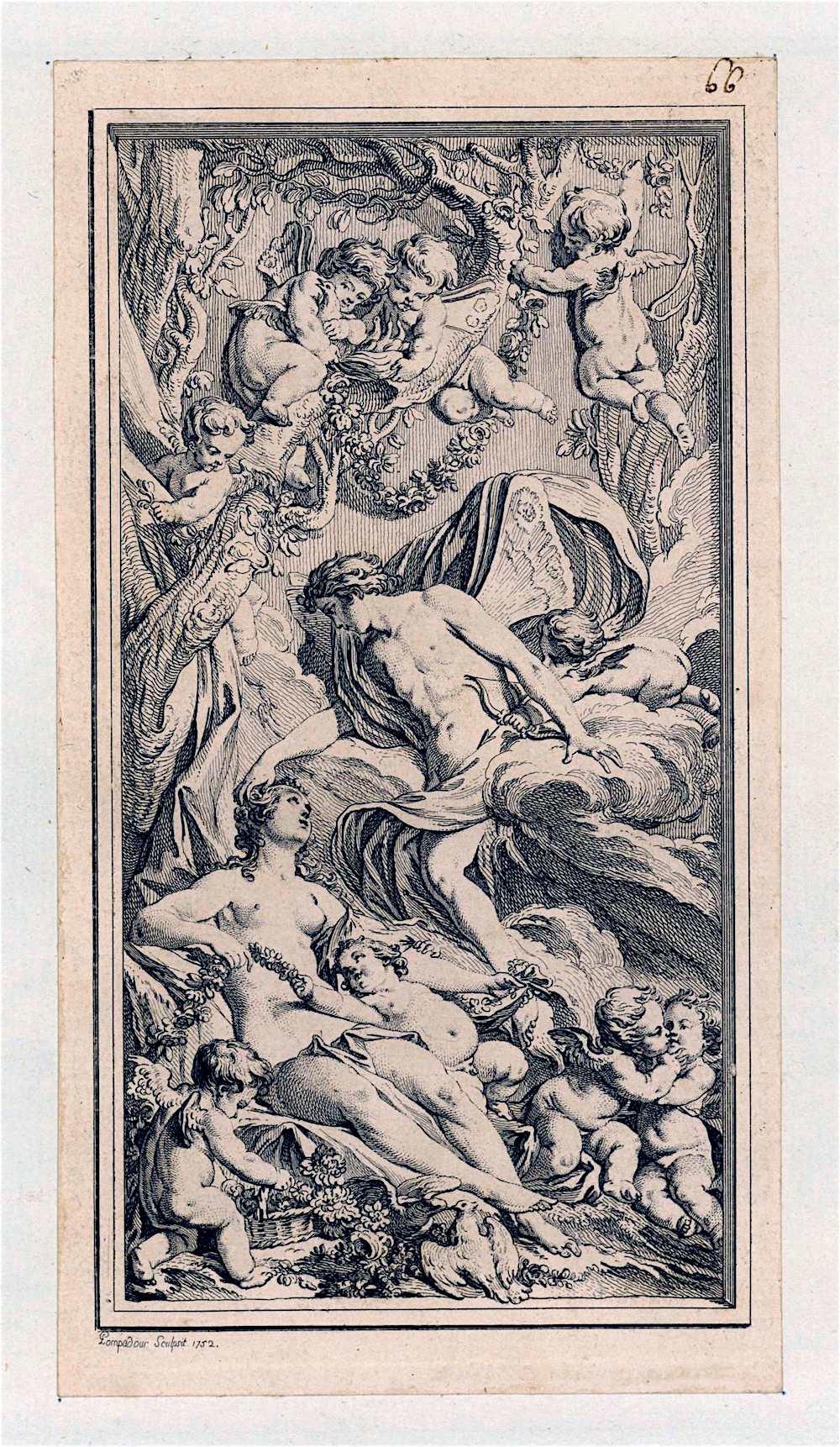

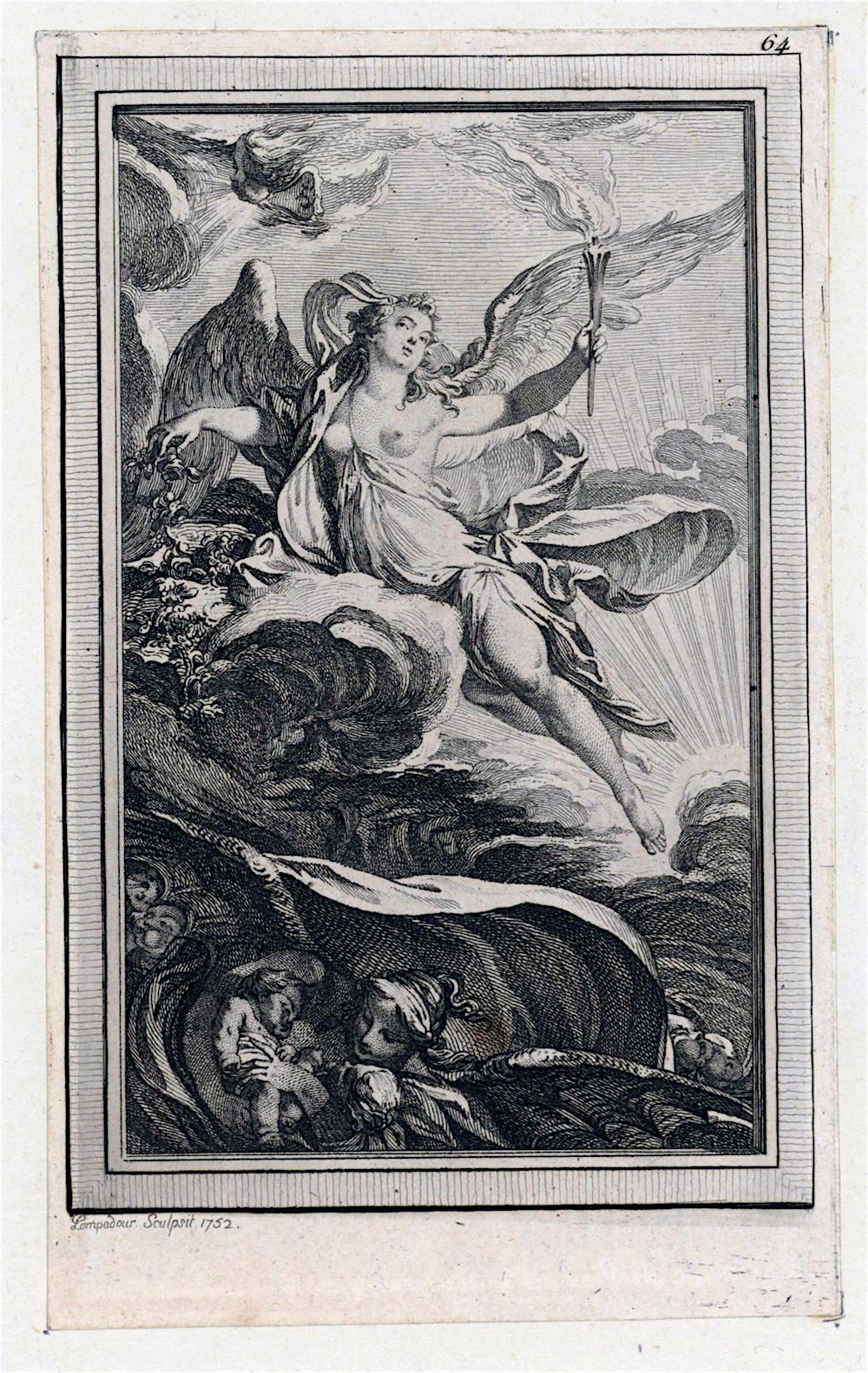
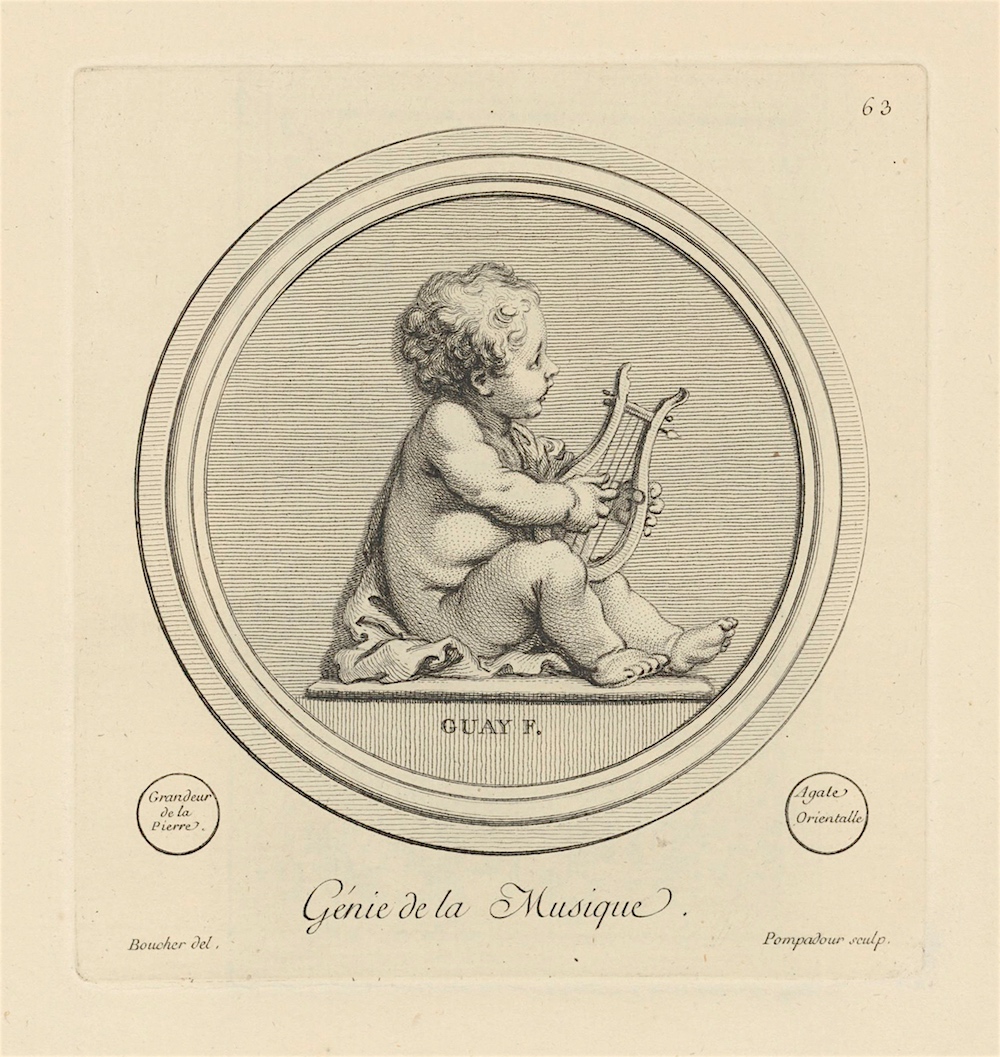
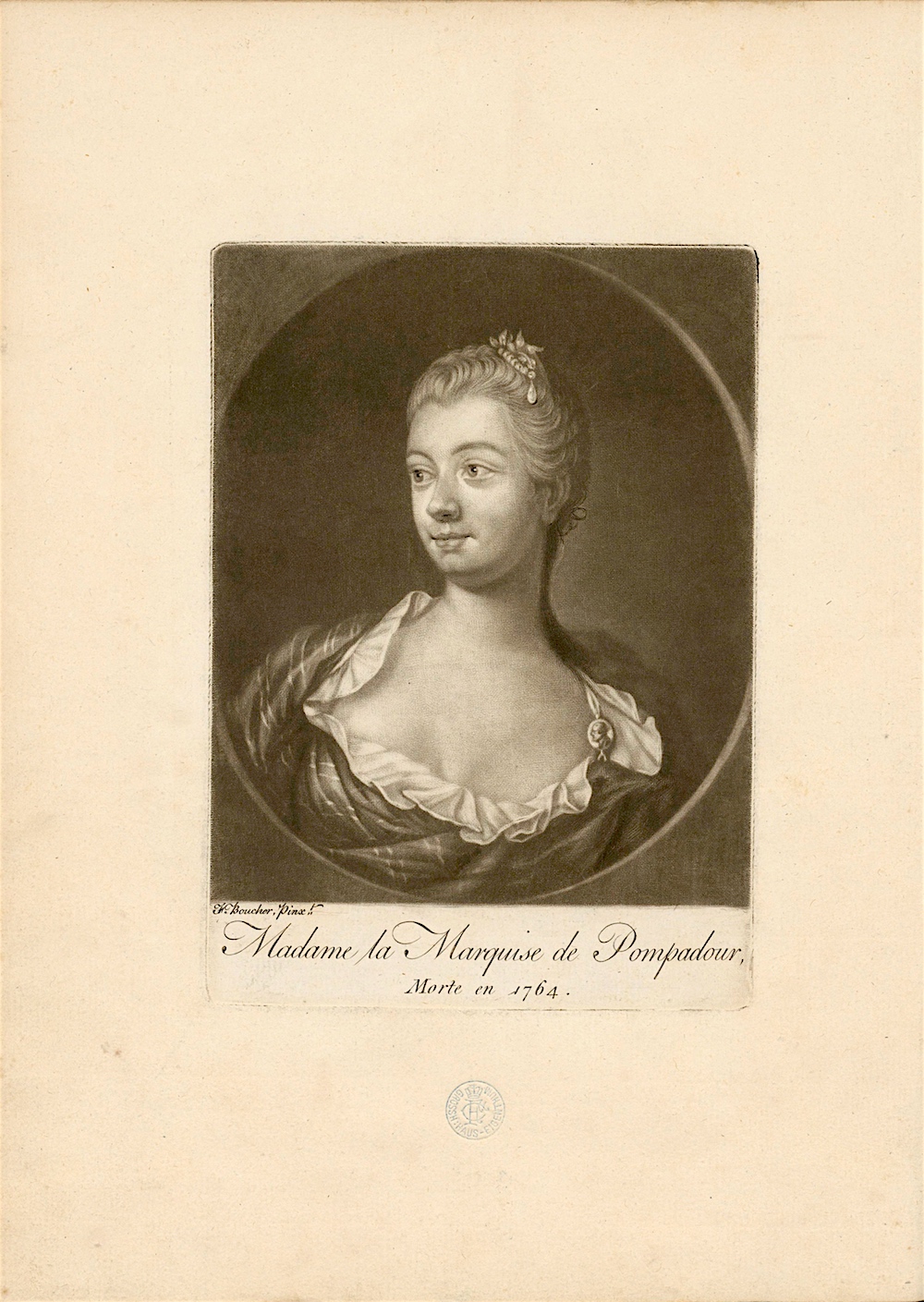
|
Above I show the plates that are not found in the early collections of plates given away to friends by Madame de Pompadour and later by her brother. If you read carefully the literature that surrounds this work of Madame Pompadour, I think you will see that she was not sure that it would be acceptable, or lets say, good enough to stand up to the strong scrutiny of the critics. She never finished this work and never brought it to a conclusion even though everything may have been ready by 1760. If I had the time to read Jean Franois Leturcq's book, Notice sur Jacques Guay: graveur sur pierres fines du roi Louis XV printed by Librairie de J. Baur, 1873, this entire work can be viewed online at Archive.org (click here to see it), I am sure that the answers to some of these questions would be found, why was this Suite d'estampes gravees par Madame la marquise de Pompadour d'apres les pierres gravees de Guay, graveur du roy, left unfinished? I close this page with the rather sad portrait of Madame la Marquise de Pompadour by Boucher, it is found in the front of 1782 edition. Who knows how the world might have changed had she lived longer... Madame de Pompadour once said... "Every day, I wish to make the world more beautiful than I found it." |
|
click here to return to the HOME page. click here to see the INDEX of the 2017 pages. see below links to previous work |
| Even experts are sometimes wrong, before you spend thousands on a book, please do your own research! Just because I say a certain binding can be attributed to le Maitre isn't any kind of guarantee, don't take my word for it, go a step further and get your own proof. In these pages I have provided you with a way of doing just that. |
| Virtual Bookings, created by L. A. Miller | return to the Home page of VIRTUAL BOOKBINDINGS |